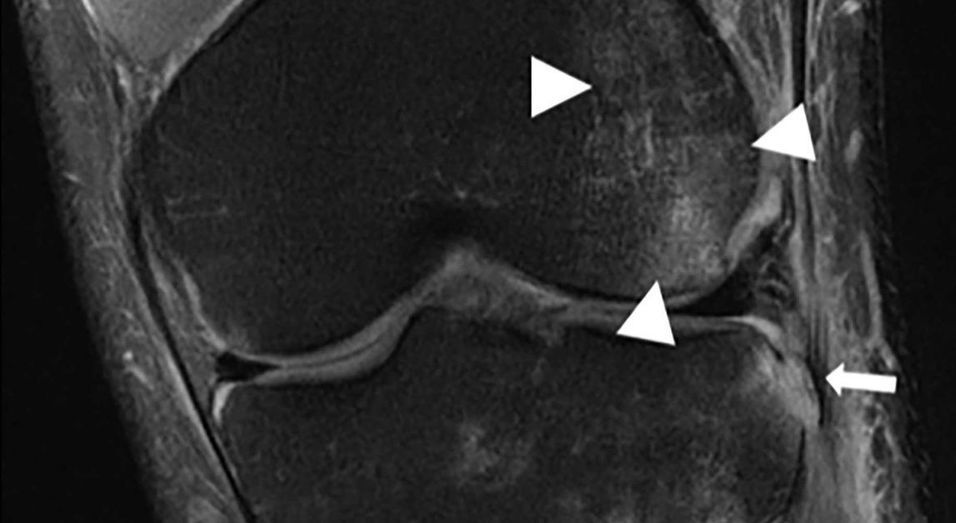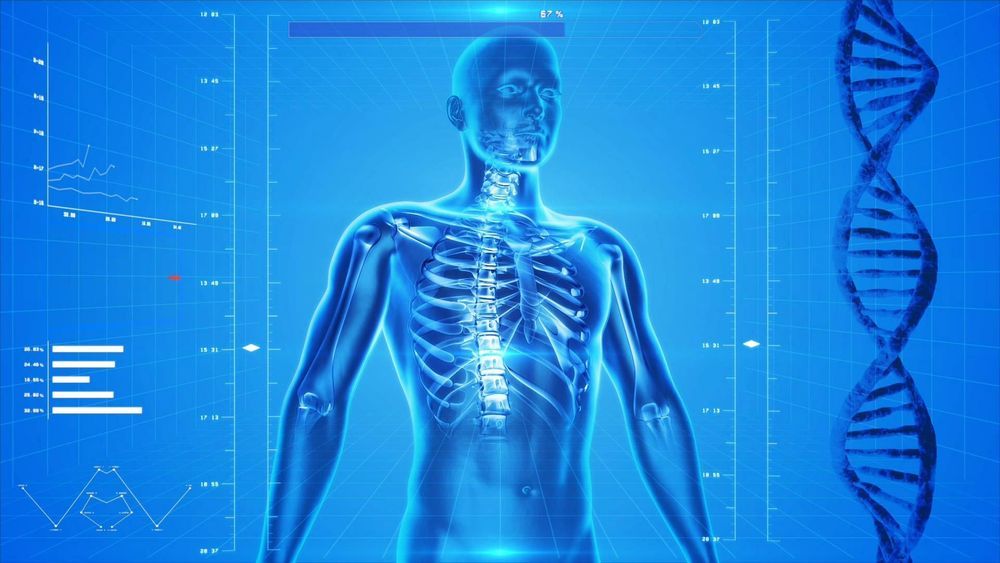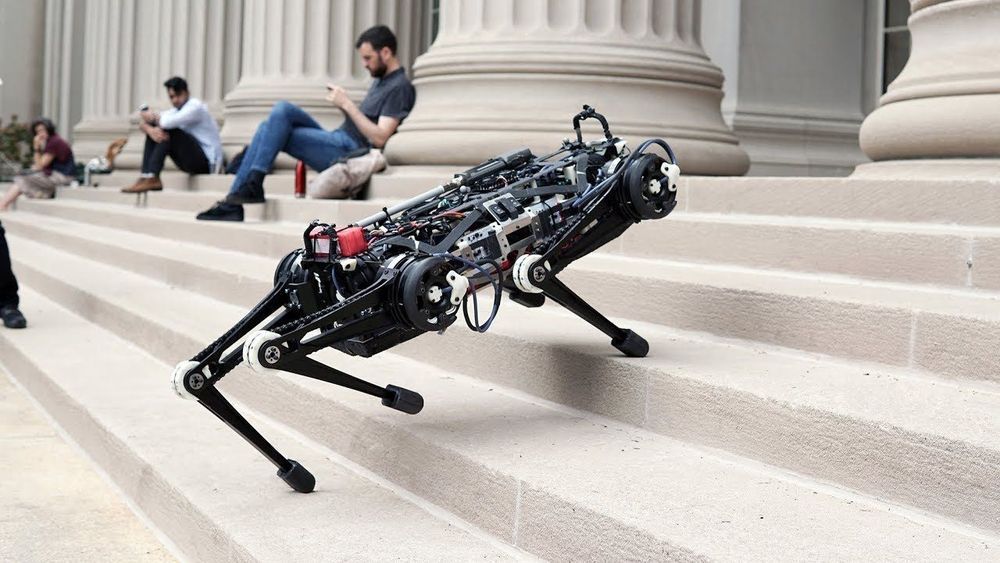When a patient climbs into an MRI scanner, it peers inside their body to reveal the complex anatomy within, like the ligaments and tendons in a knee.
Google has been placing COVID-19 reminders, warnings, and information in many of its services for some time now. You can’t use a Google service without being reminded to wear a mask, or of where to go for screening. It’s even added various tips to Maps, including where to get takeout during the pandemic. With a possible new overlay feature, it looks like we might soon be able to add Google Maps to our list of COVID tracing apps.
Jane Wong has shared screenshots she was able to trigger in Maps, showcasing the new feature. The pictures detail the COVID-19 tracking option alongside the other map overlays, like Traffic and Transit. The feature apparently sources data from Wikipedia, The New York Times, Johns Hopkins University, and Brihanmumbai Municipal Corporation. Using this information, the overlay colors impacted states, countries, and their borders. The map also displays whether the current numbers for each area are increasing or decreasing.

DeepMind today announced a new milestone for its artificial intelligence agents trained to play the Blizzard Entertainment game StarCraft II. The Google-owned AI lab’s more sophisticated software, still called AlphaStar, is now grandmaster level in the real-time strategy game, capable of besting 99.8 percent of all human players in competition. The findings are to be published in a research paper in the scientific journal Nature.
Not only that, but DeepMind says it also evened the playing field when testing the new and improved AlphaStar against human opponents who opted into online competitions this past summer. For one, it trained AlphaStar to use all three of the game’s playable races, adding to the complexity of the game at the upper echelons of pro play. It also limited AlphaStar to only viewing the portion of the map a human would see and restricted the number of mouse clicks it could register to 22 non-duplicated actions every five seconds of play, to align it with standard human movement.
“Eat your vitamins” might be replaced with “ingest your ceramic nano-particles” in the future as space research is giving more weight to the idea that nanoscopic particles could help protect cells from common causes of damage.
Oxidative stress occurs in our bodies when cells lose the natural balance of electrons in the molecules that we are made of. This is a common and constant occurrence that is part of our metabolism but also plays a role in the aging process and several pathological conditions, such as heart failure, muscle atrophy and Parkinson’s disease.
The best advice for keeping your body in balance and avoiding oxidative stress is still to have a healthy diet and eat enough vitamins, but nanoparticles are showing promising results in keeping cells in shape.
Xanadu, a photonic quantum computing company, announced today the release of the world’s first publicly available photonic quantum cloud platform, according to a press release. Developers can now access Xanadu’s gate-based photonic quantum processors, in 8, 12, and soon 24-qubit machines.
Photonics based quantum computers have many advantages over older platforms. Xanadu’s quantum processors operate at room temperature. They can easily integrate into existing fiber optic-based telecommunication infrastructure, enabling a future where quantum computers are networked. It also offers great scalability supporting fault tolerance, owing to robust error-resistant physical qubits and flexibility in designing error correction codes. Xanadu’s unique type of qubit is based on squeezed states – a special type of light generated by our own chip-integrated silicon photonic devices.
“We believe that photonics offers the most viable approach towards universal fault-tolerant quantum computing with Xanadu’s ability to network a large number of quantum processors together. We are excited to provide this ecosystem, a world-first for both quantum and classical photonics,” said Christian Weedbrook, Xanadu Founder and CEO. “Our architecture is new, designed to scale-up like the Internet versus traditional mainframe-like approaches to quantum computing.”
“Hotspots” of Coronavirus Infections in Human Bodies
An infection with the coronavirus SARS-CoV-2 can affect multiple organs. With this in mind, researchers of the German Center for Neurodegenerative Diseases (DZNE) and Cornell University in the US have investigated cellular factors that could be significant for an infection. To this end, they analyzed the activity of 28 specific genes in a wide range of human tissues. Their findings, which provide a map of potentially disease-relevant factors across the human body, are published in the journal Cell Reports.
“SARS-CoV-2 not just infects the respiratory system, it has the potential to affect many other organs in the body. Even if the virus infects the respiratory system first, it is essential to be able to predict where it might go next. This aids to develop therapies. Our goal was thus to learn more about what makes the different organs susceptible to infection,” explained Dr. Vikas Bansal, a data scientist at the DZNE’s Tuebingen site. “Therefore, we looked at different tissues to see which components of the cellular machinery might be relevant for infection and also which cell types appear to be particularly susceptible.” Bansal co-authored the current paper with Manvendra Singh, a Cornell presidential fellow, and with Cedric Feschotte, professor in the Department of Molecular Biology and Genetics at Cornell University.
A downsized version of the company’s Sycamore chip performed a record-breaking simulation of a chemical reaction.
Vision-free MIT Cheetah
Posted in bioengineering, mathematics, physics, robotics/AI
MIT’s Cheetah 3 robot can now leap and gallop across rough terrain, climb a staircase littered with debris, and quickly recover its balance when suddenly yanked or shoved, all while essentially blind.
Watch more videos from MIT: https://www.youtube.com/user/MITNewsOffice?sub_confirmation=1
The Massachusetts Institute of Technology is an independent, coeducational, privately endowed university in Cambridge, Massachusetts. Our mission is to advance knowledge; to educate students in science, engineering, and technology; and to tackle the most pressing problems facing the world today. We are a community of hands-on problem-solvers in love with fundamental science and eager to make the world a better place.
The MIT YouTube channel features videos about all types of MIT research, including the robot cheetah, LIGO, gravitational waves, mathematics, and bombardier beetles, as well as videos on origami, time capsules, and other aspects of life and culture on the MIT campus. Our goal is to open the doors of MIT and bring the Institute to the world through video.
Circa 2018
SPIDERS often make people jump but a bunch of clever scientists have managed to train one to jump on demand.
Researchers managed to teach the spider – nicknamed Kim – to jump from different heights and distances so they could film the arachnid’s super-springy movements.
The study is part of a research programme by the University of Manchester which aims to create a new class of micro-robots agile enough to jump like acrobatic spiders.
November 2019 is a landmark month in the history of the future. That’s when humanoid robots that are indistinguishable from people start running amok in Los Angeles. Well, at least they do in the seminal sci-fi film “Blade Runner.” Thirty-seven years after its release, we don’t have murderous androids running around. But we do have androids like Hanson Robotics’ Sophia, and they could soon start working in jobs traditionally performed by people.
Russian start-up Promobot recently unveiled what it calls the world’s first autonomous android. It closely resembles a real person and can serve in a business capacity. Robo-C can be made to look like anyone, so it’s like an android clone. It comes with an artificial intelligence system that has more than 100,000 speech modules, according to the company. It can operate at home, acting as a companion robot and reading out the news or managing smart appliances — basically, an anthropomorphic smart speaker. It can also perform workplace tasks such as answering customer questions in places like offices, airports, banks and museums, while accepting payments and performing other functions.
“We analyzed the needs of our customers, and there was a demand,” says Promobot co-founder and development director Oleg Kivokurtsev. “But, of course, we started the development of an anthropomorphic robot a long time ago, since in robotics there is the concept of the ‘Uncanny Valley,’ and the most positive perception of the robot arises when it looks like a person. Now we have more than 10 orders from companies and private clients from around the world.”









